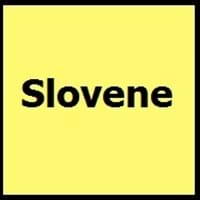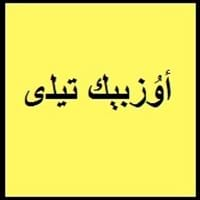Slovene vs Uzbek
Countries
European Union, Slovenia
Turkey, Uzbekistan
National Language
Austria, Croatia, Hungary, Italy, Slovenia
Afganistan, China, Kazakhstan, Kyrgyzstan, Russia, Tajikistan, Turkmenistan, Uzbekistan
Second Language
Not spoken in any of the countries
Not spoken in any of the countries
Speaking Continents
Europe
Middle East
Minority Language
Austria, Hungary, Italy
Not spoken in any of the countries
Regulated By
Slovenian Academy of Sciences and Arts
Not Available
Interesting Facts
- The Freising Monuments is the oldest preserved records of written Slovene from 10th century.
- The first Slovene book was printed in 1550.
- Uzbek is officially written in the Latin script, but many people still use Cyrillic script.
- In Uzbek language, there are many loanwords from Russian, Arabic and Persian.
Similar To
Serbo-Croatian
Kazakh and Uyghur Languages
Derived From
Not Available
Not Available
Alphabets in
Slovene-Alphabets.jpg#200
Uzbek-Alphabets.jpg#200
Scripts
Latin
Arabic, Cyrillic, Latin
Writing Direction
Left-To-Right, Horizontal
Not Available
How Are You?
Kako se imate?
Qalay siz?
Good Night
Lahko noč
Hayirli tun
Good Evening
Dober večer
Hayirli kech
Good Afternoon
Dober dan
Hayirli kun
Good Morning
Dobro jutro
Hayirli tong
Sorry
Oprostite
Kechiring!
I Love You
Ljubim te
Sizni sevaman
Excuse Me
Oprostite
Iltimos! Menga qarang
Dialect 1
Prekmurje Slovene
Tashkent
Where They Speak
Hungary, Slovenia
Not Available
How Many People Speak
Not Available
Where They Speak
Italy
Not Available
Dialect 3
Styrian
Ferghana
Where They Speak
Slovenia
Not Available
Speaking Population
Not Available
Native Name
Not available
أۇزبېك ﺗﻴﻠی o'zbek tili ўзбек тили (o‘zbek tili)
Alternative Names
Slovenian, Slovenscina
Annamese, Ching, Gin, Jing, Kinh, Viet
French Name
slovène
ouszbek
German Name
Slowenisch
Usbekisch
Pronunciation
[slɔˈʋèːnski ˈjɛ̀ːzik], [slɔˈʋèːnʃt͡ʃina]
Not Available
Origin
972-1093
9th–12th centuries AD
Language Family
Indo-European Family
Turkic Family
Subgroup
Not Available
Turkic
Branch
Not Available
Southestern(Chagatai)
Early Forms
No early forms
Chagatay
Standard Forms
Slovene
Uzbek
Language Position
Not Available
Signed Forms
Not Available
Not Available
Scope
Individual
Macrolanguage
ISO 639 6
Not Available
Not Available
Glottocode
slov1268
uzbe1247
Linguasphere
53-AAA-f
No data available
Language Type
Living
Living
Language Linguistic Typology
Not Available
Not Available
Language Morphological Typology
Fusional
Not Available
Slovene and Uzbek Language History
Comparison of Slovene vs Uzbek language history gives us differences between origin of Slovene and Uzbek language. History of Slovene language states that this language originated in 972-1093 whereas history of Uzbek language states that this language originated in 9th–12th centuries AD. Family of the language also forms a part of history of that language. More on language families of these languages can be found out on Slovene and Uzbek Language History.
Slovene and Uzbek Greetings
People around the world use different languages to interact with each other. Even if we cannot communicate fluently in any language, it will always be beneficial to know about some of the common greetings or phrases from that language. This is where Slovene and Uzbek greetings helps you to understand basic phrases in Slovene and Uzbek language. Slovene word for "Hello" is Halo or Uzbek word for "Thank You" is Rakhmat. Find more of such common Slovene Greetings and Uzbek Greetings. These greetings will help you to be more confident when conversing with natives that speak these languages.
Slovene vs Uzbek Difficulty
The Slovene vs Uzbek difficulty level basically depends on the number of Slovene Alphabets and Uzbek Alphabets. Also the number of vowels and consonants in the language plays an important role in deciding the difficulty level of that language. The important points to be considered when we compare Slovene and Uzbek are the origin, speaking countries, language family, different greetings, speaking population of these languages. Want to know in Slovene and Uzbek, which language is harder to learn? Time required to learn Slovene is 44 weeks while to learn Uzbek time required is 44 weeks.





